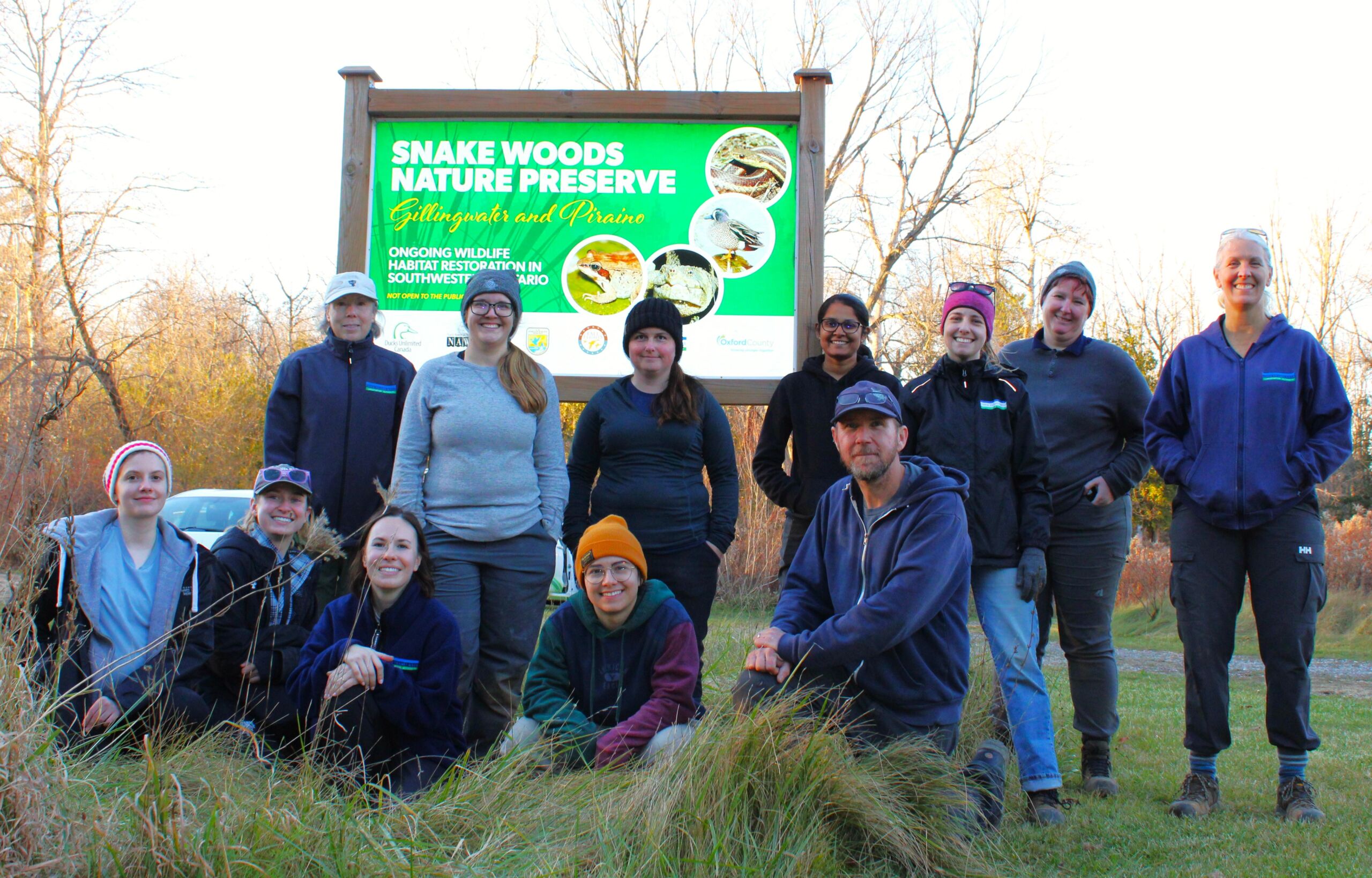How to Build a Snake Hibernaculum
Snake hibernacula are underground chambers where snakes can spend the cold winter months. As natural hibernation sites become more difficult to find due to urban expansion and other disturbances, constructed hibernacula provide safe spaces for snakes to find refuge.
This fall, Upper Thames River Conservation Authority (UTRCA) staff built a snake hibernaculum at Snake Woods Nature Preserve in Oxford County. The species that may occupy the structure this winter include Eastern Garter Snake, DeKay’s Brown Snake, and Milk Snake.
Scott Gillingwater, Species at Risk Biologist with the UTRCA, provided the following steps to build a snake hibernaculum on your own property:
1. Choose a well drained site that is south-facing to ensure plenty of sunlight. You want the heat of the sun to warm the site for a few hours each day. This is especially important in the spring.
2. With an excavator or by hand, dig a square hole below the frost line, generally 2 – 2.5 metres deep. The hole shown in the video has a diameter of about 6 feet. Three of the walls should be vertical, and one should be slanted like a slide.
3. Make the entrance shaft for the snakes by lining up cinder blocks or placing Big O pipe (or both) from the top to bottom of the slanted wall. The holes in the cinder blocks she be aligned so a snake cam navigate through one hole to the next. Be sure to drill multiple holes in the Big O pipe along the half closer to the ground. The holes need to be larger than the diameter of any snakes that might use it so they have easy access to and from the pipe. The entrance(s) will extend from the surface into the concrete debris placed below. If using cinder blocks, you will want to create an approximately 45 degree angle on one side of the hole to easily place the lined entrance blocks. Wrapping the lined up cinder block shaft in geotextile will reduce movement and infiltration of substrate.
4. Place large concrete debris of various shapes and sizes into the hole, around the shaft outlet for the snakes (at the base of the cinder blocks and/or big-O pipe). Take care not to crush the cinder blocks or big-O pipe. Although this will look messy, the gaps created between the concrete debris will be where the snakes spend the winter underground.
5. Build up the concrete pile to at least one metre high. You can then do one of two things: 1) add small pieces of concrete and then a gravel layer over the concrete pile, or 2) use other materials such as roofing metal to cover the concrete debris. This will prevent the sand in step 6 from filling in those important gaps within the concrete debris pile.
6. Add a thick layer of sand/soil over top of the gravel layer / roofing metal. This layer will help insulate the concrete debris chamber below.
7. Add field stone around the entrance to act as a heat sink (an area warmed by the sun) and cover for snakes, and to reduce thick growth of vegetation.
8. Adding a brush pile along the back and/or sides of the hibernaculum will provide additional cover for the snakes during the active season, as well as when they emerge from the site each spring. The snake hibernaculum and brush piles will provide habitat for a wide range of reptiles, amphibians, birds, mammals, and insects.


